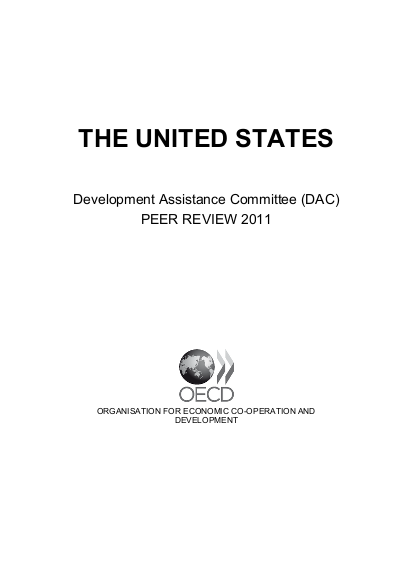
The US Administration set out its new strategic orientations and ways to engage in development co-operation in two game-changing documents published in 2010: the Presidential Policy Directive on Global Development, a first of its kind by an American Administration, which provides policy guidance to all US government agencies, and the Quadrennial Diplomacy and Development Review, the first ever analysis of how to rebuild civilian power to support sustainable development. Together, they outline an approach based on three elements: i) a policy targeted at sustainable development; ii) an operational model focused on effectiveness and results, underscoring the importance of country ownership and promoting effective division of labour among donors; and iii) a whole of government approach that harnesses development capabilities across government. The DAC welcomes the work being done by the US Administration to translate the policy shift into concrete strategic guidance for the development co-operation programme. However, the US Foreign Assistance Act – which provides the legal foundation for the US aid programme – now includes 140 broad priorities and 400 specific directives for implementing the priorities. This proliferation makes it difficult to translate the US vision into a coherent set of strategies. It also leads to supply-driven approaches. Many of these problems could be addressed through a strategic framework agreed between the Administration and the Congress. This shared vision would define the objectives and results to be achieved through the development pillar of the “3D” framework of development, defence and diplomacy. Ultimately, this should allow Congress to give the Administration greater flexibility in how it conducts its development programmes and accounts, within the funding levels determined by Congress. The US Administration also needs to strengthen public support for the aid programme through more targeted efforts to communicate results. The US has a vibrant and generous civil society made up of a wide range of coalitions, which include think tanks, NGOs, foundations, and the private sector. These are instrumental both in advocating and raising public awareness for development and in implementing the aid programme. The Administration would gain from engaging more strategically with them both at the policy and implementation levels, recognising their specificity and the value they can add.